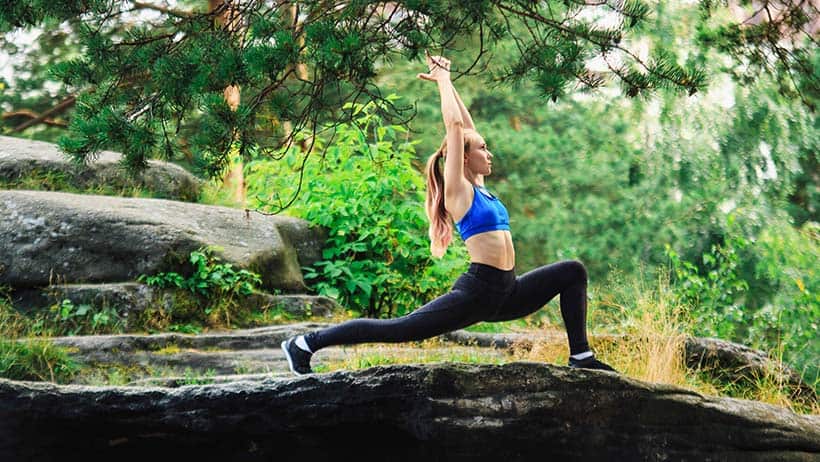
Every yoga pose, known in Sanskrit as an “asana,” has its own way of bringing the body and mind into greater harmony. World-renowned yoga teacher B.K.S. Iyengar poetically compares the body to a bow and each asana to the various arrows with which individuals target the ultimate aim of yoga practice — the soul.
This guide offers an in-depth look at warrior I pose (virabhadrasana I).
About the Pose
वीरभद्रासन १
Virabhadrasana I
Named for the first warrior Shiva created, virabhadrasana I stirs up a fighting spirit. A warrior (and a yoga practitioner) must have strength, flexibility, and tenacity to conquer the day. All three of the warrior poses embody these principles, and their overarching benefits to your mind and body make them essential poses to master. Virabhadrasana I invigorates the senses and teaches yoga students to trust in their own warrior instincts. Level: Beginner Key Benefits:
- Stretches both the lower and upper parts of the body
- Improves the respiratory system
- Reduces lower back pain
- Promotes better flexibility in the hip, knee, and ankle joints
- Reduces stiffness in the neck and shoulders
Specific Cautions:
- People with a cardiac condition or high blood pressure should avoid this pose.
Related Poses:
- Warrior II Pose (Virabhadrasana II): This beginner pose improves the respiratory system, relieves back pain, and stretches the whole body.
- Warrior III Pose (Virabhadrasana III): This intermediate pose exercises your balance, leg muscles, and abdominal organs.
Recommended: Browse more of our guides on the art and practice of yoga to harmonize your body, mind, and soul.
Trying It Out
Remember to keep your breathing full and steady as you follow these step-by-step instructions to try this pose out for yourself:
Step One
Begin in mountain pose (tadasana). Widen your stance by moving one foot in front of you until there’s about four feet of space between your feet. Lift your arms so they are level with your shoulders and keep your palms facing downward.
Step Two
Lift both arms over your head until your palms face each other. Push your shoulder blades into your back and then lift them upward.
Step Three
On your next exhale, rotate your torso and your right leg 90 degrees to the right. Your right foot should now point forward while your left foot points to the right.
Step Four
Bend your right knee so your calf and thigh resemble a right angle. Stretch your upper body up toward the ceiling.
Step Five
Breathe in this pose for at least 15-30 seconds.
Refining the Pose
Achieving maximum benefit from your yoga practice requires you to pay close attention to your physical alignment. To ensure you maintain proper alignment, ask yourself these questions:
- Have you aligned your right knee with your right ankle?
- Are your shoulder blades pushed in and lifting up?
- Did you straighten your left leg behind you?
- Is your weight distributed evenly between both knees?
Variations:
- Warrior I Pose With Chair (Virabhadrasana I Chair Variation): This variation involves resting your bent leg on a chair as you practice warrior I pose, giving your body more support for the stretch.
- Warrior I Pose With Chair in Front (Virabhadrasana I With Chair in Front): This variation, which involves gripping a chair in front of you with your hands, encourages a gentler, more stable stretch because the chair aids your balance.
- Warrior I Pose With Straight Legs (Virabhadrasana I Variation Straight Legs): In this variation, you straighten both of your legs and place your hands on your hips while your feet remain in the classic position for warrior I pose.